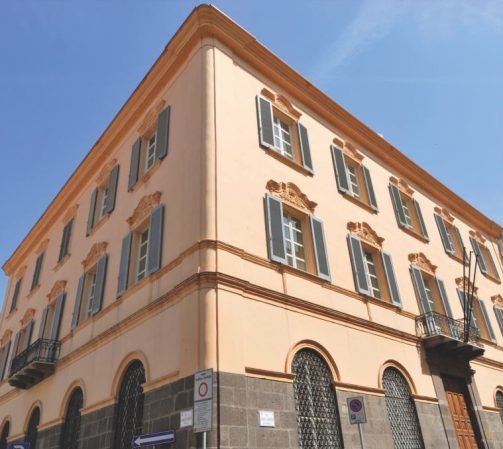The building, which houses the offices and activities of the Fondazione di Sardegna, was built in the area of first urban expansion, around the middle of the nineteenth century.
The building originally housed the small Goldoni Theater inside, which was demolished when the building was renovated to become the headquarters of the Bank of Italy.
Today it houses a selection of the Fondazione di Sardegna art collection, consisting of important works by the masters of twentieth-century art and significant contemporary testimonies that define a rich cognitive path of the island’s artistic production from the late 1800s to the present day.
The collection of the Fondazione di Sardegna, formed during the entire period of the institution’s life, does not derive from the process of privatization of the Banco di Sardegna – a public-law institution, but from targeted acquisitions of works capable of recounting not only the historical artistic development but also the character and different stylistic languages peculiar to island artists.
The artists featured are the most important in the island’s art scene, and for each of them there is a sufficient amount of works to fully represent their stylistic path. We refer in particular to artists such as Antonio Ballero; Francesco Ciusa; Giuseppe Biasi; Mario Delitala; Filippo Figari; Stanis Dessy; Pietro Antonio Manca; Cesare Cabras; Foiso Fois; Carlo Contini; Melkiorre Melis; Aligi Sassu; Costantino Nivola; Salvatore Fancello; Mauro Manca; Gavino Tilocca; Maria Lai; up to the more recent Salvatore Garau.
The works are preserved and exhibited at institutional sites in Sassari and Cagliari.









